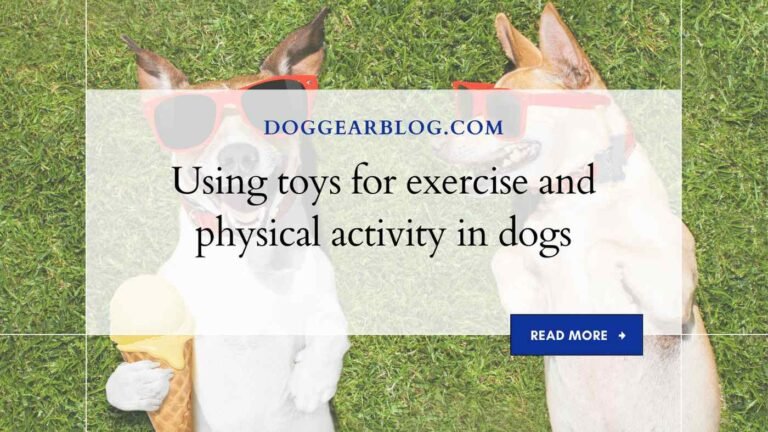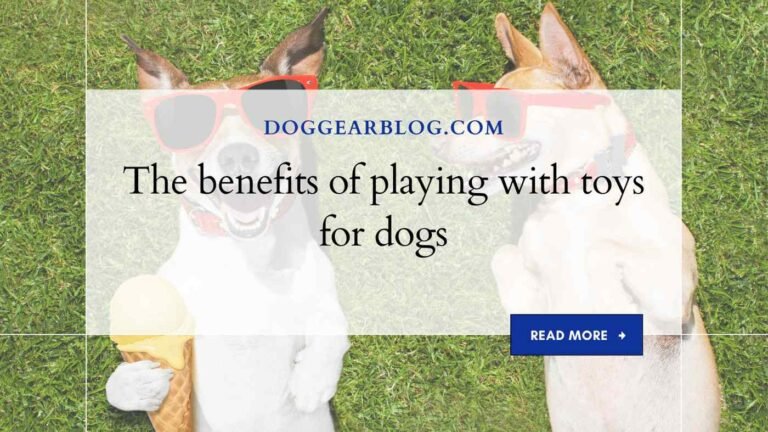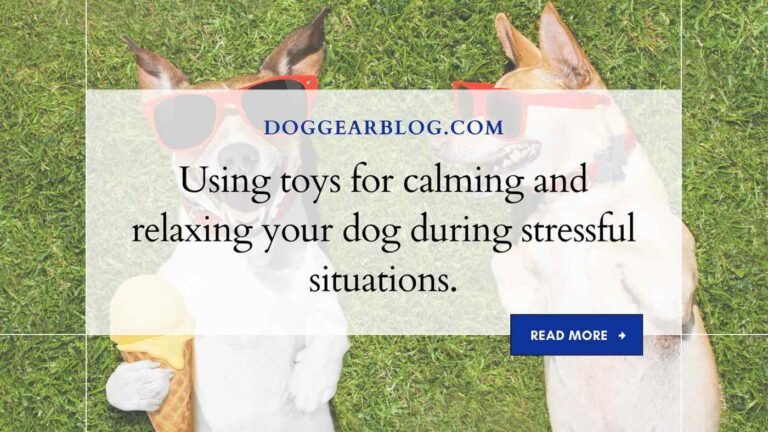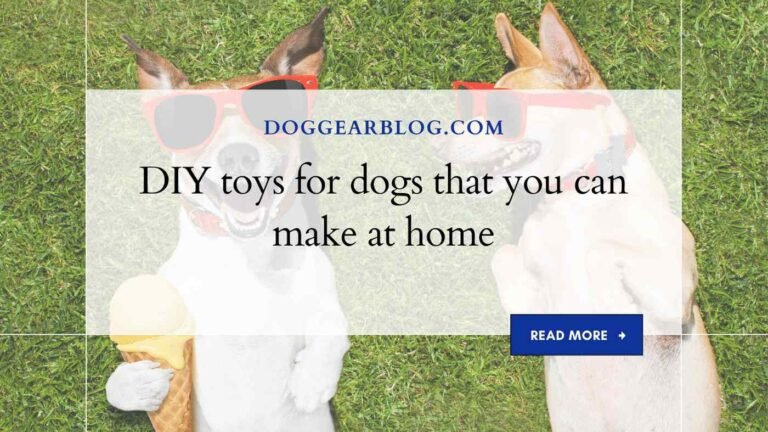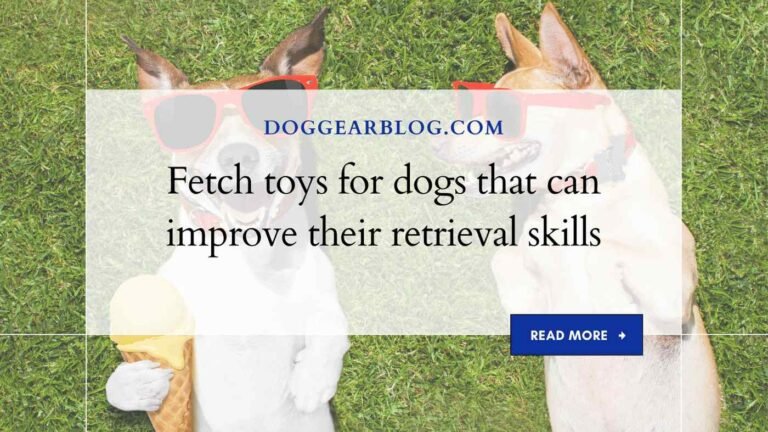Using toys to teach your dog new tricks and behaviors
Are you tired of the same old training methods with your furry friend? Do you want to add some excitement and fun to their learning process? Look no further than toys! Yes, that’s right – using toys can be a great way to teach your dog new tricks and behaviors. Not only is it entertaining for them, but it also strengthens the bond between you two.
In this blog post, we’ll explore how different types of toys can aid in teaching skills such as obedience, agility, and even basic manners. So grab your pup’s favorite plaything and let’s get started on this playful journey of education!
How can toys help teach your dog new behaviors and tricks?
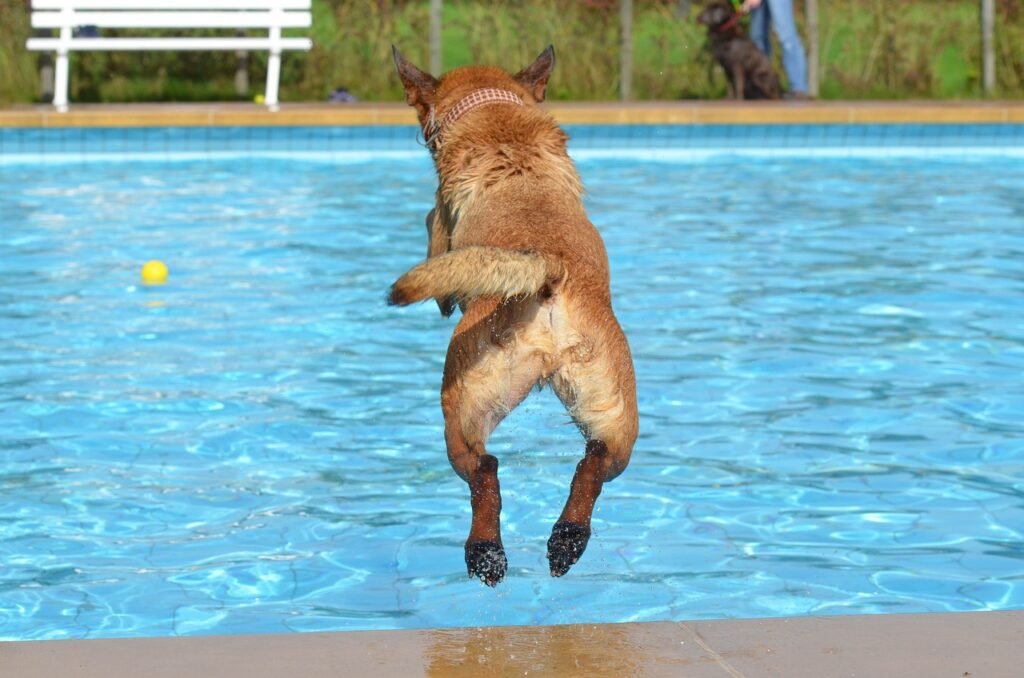
Toys can be a great way to help teach your dog new behaviors and tricks. Here are some tips on using toys to help:
Pick toys that your dog loves. Toys that are fun for both you and your dog will be more likely to be used.
Encourage obedience training with positive reinforcement, such as praise, treats, or playtime. Use rewards sparingly at first, and increase the reward as your dog behaves more obediently.
Play “catch” with your dog by setting a toy several feet away and giving the toy a low-pitched command (like “Drop it!”) Once your dog has the toy in his mouth, say “Good catch!” and give him the toy. Repeat until your dog gets the hang of it. You can also try playing “hide-and-seek” with toys by hiding them around the house before letting your dog have a turn finding them.
Gift-giving can also be fun for dogs and helps encourage good behavior. When you’re thinking of gifts for your pup, think about what he likes to do (e.g., fetching things, being chased). Find something that matches his interests and add it to his collection of favorite toys.
It’s important to remember that toys should never be used as punishment. If your dog is not behaving correctly, take away the toy instead of the toy’s contents.
There are many different types of toys available on the market, so be sure to explore and find something that will both entertain and motivate your dog.
If you have any questions about using toys to teach your dog new behaviors or tricks, please don’t hesitate to ask!
Types of toys that can be used for this purpose

There are many toys that can be used for training a dog. Some of the most common toys for this purpose are positive reinforcement toys such as treats, Kongs, or chew toys. These types of toys help to reinforce the behavior you want your dog to repeat. Other types of training toys include games such as fetch or tug-of-war. These games provide an incentive for your dog to perform a desired behavior and can be fun for both you and your pet.
Whatever type of toy you decide to use for training, make sure it is durable enough to withstand regular use. Toys that can be thrown, batted, or played with vigorously should be perfect for this purpose. If your dog gets too rough with the toy, try substituting a softer toy instead.
Whenever training your dog, be sure to provide plenty of praise and reinforcement along with the toy. This will help to ensure that your dog understands the behavior you are trying to teach and predicts that behavior hoping for a reward.
Some examples of dog toys that can be used for training purposes are:
- Kongs
- Treats
- Chew toys
- Fetch games
- Boxes
- Toys with squeakers
- Toy balls
How to use these toys to teach your dog new behaviors
When it comes to teaching your dog new behaviors, toys can be a great way to start. Not only do they provide hours of fun for both you and your pet, but they also can help promote good behavior by rewarding desired actions. Here are four tips for using toys to teach new skills:
1) Select the right toy. Toys that are appropriate for a particular breed or age group should be used; otherwise your dog may become bored or frustrated.
2) Give consistent reinforcement. Always reward your dog when he performs the desired behavior- even if the “toy” is just a piece of food placed inside the toy. This will help him understand that his actions are necessary for getting a reward, and will encourage continued good behavior.
3) Avoid over-firing rewards. If you consistently get rewards for every action your dog takes, he may become Skinner Boxed (a term used to describe when dogs learn to disregard responses other than getting food). Instead, only give rewards for REALLY GOOD behavior; this will help keep him excited about learning new things and motivated to try harder next time.
4) Play together! Toys can be a fun way to spend time with your pet, and can also help teach obedience exercises indoors when conditions permit. simply take turns playing with the toy, one providing directions while the other follows suit – this way both of you have fun!
There are plenty of great toys available on the market that can be used to teach new behaviors.
Fun fact: one of the first dogs to ever be trained using rewards and punishments was a Newfoundland named Pongo – after he was shown how well this method worked, he became the darling of training schools around the world!
What are some of the benefits of using toys to teach your dog new behaviors?
Clicker training with a toy is an effective way to teach your dog new behaviors.
Clicker training uses a clicking sound (or verbal cue) as a signal for your dog to respond. This approach can be used to teach all sorts of commands, including sitting, down, stay, come, and more.
There are many benefits to using toys as tools for behavior modification:
- Toys are visually stimulating – this means that dogs will pay more attention when they’re playing with them than when they’re inactive.
- Toys provide mental and physical stimulation – playing with toys activities such as fetching and tug-of-war help keep dogs mentally alert and physically fit.
- Toys are easy to store – if you have a limited number of spaces in your house or yard, using toys can help you free up space for other things.
If you’re interested in learning more about the benefits of toy-based behavior modification, please visit our dedicated page on the topic.
What are some of the demerits of using toys to teach your dog new behaviors?
Some of the demerits of training your dog through play with toys are that it is often ineffective, can be boring for both you and your dog, and can lead to destructive behavior. Ineffective training through play means that your dog may not associate the sound of the bell or toy being played with something productive – such as getting a treat – which can make success in learning new tricks difficult.
Often dogs get bored very quickly when playing fetch and will start to search for other things to do, such as digging in the garden or chewing on furniture. This leaves you frustrated and your house looking messy! Additionally, usingtm Toys to teach skills commonly leads to dogs doing what they are told simply because they want the toy – rather than because they understand what you are asking them to do. If they always get their favorite toy when they perform a desired action, then there is no incentive for them to actually learn how to behave appropriately. This can lead to Dogs that ignore their owners or become overly-dependent on them.
Using toys as rewards often leads Dogs into situations where they try to get their owner’s attention by barking excessively or jumping up at them. It is important not to rely too much on these behaviors, as Dogs tend do repeat whatever works in achieving their goal – whether it be getting a toy every time they sit or calm down after shaking a toy vigorously.
Conclusion
In this blog post, we introduce you to some toys that can be used to teach your dog new tricks and behaviors. We explain how these toys work and which ones are best suited for different purposes. We also share a few tips on how to use them effectively so that both you and your pup will benefit from their use. Hopefully, this information will help you get the most out of using toys as a training tool. Enjoy!

